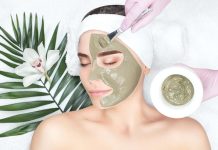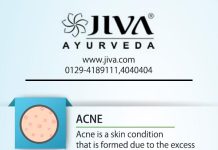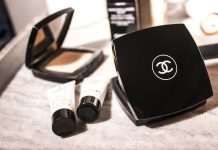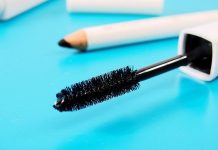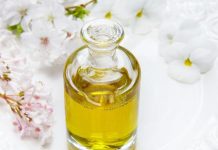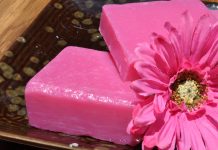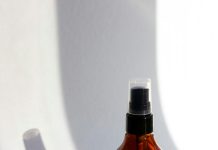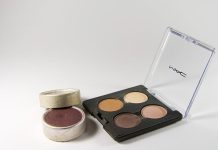In the quest for radiant, youthful skin, one simple practice often stands as a transformative secret: exfoliation. Like an artist revealing the masterpiece beneath layers of dust, exfoliation uncovers the vibrant, smooth canvas hidden beneath our skin’s surface. But what makes this age-old ritual so powerful? As we delve into the science and benefits of exfoliation, discover how this essential step can illuminate your complexion, unveiling a brighter, more refined version of yourself. Whether you’re a skincare novice or a seasoned enthusiast, understanding the art of exfoliation could be the key to unlocking your skin’s true potential.
Understanding the Science Behind Exfoliation

At its core, exfoliation is the process of removing dead skin cells from the surface of your skin. This is crucial because these cells can accumulate, leading to a dull complexion and clogged pores. By gently sloughing away these layers, you unveil the fresh, radiant skin beneath. Scientifically, this process not only improves texture but also stimulates cell turnover, encouraging the production of new, healthy skin cells.
There are two primary types of exfoliation:
- Physical Exfoliation: Involves the use of granules or tools to manually scrub away dead skin. Think of sugar scrubs or exfoliating brushes.
- Chemical Exfoliation: Utilizes acids like AHAs (alpha hydroxy acids) or BHAs (beta hydroxy acids) to dissolve the bonds between dead cells. These penetrate deeper, offering a more thorough cleanse.
Both methods have their benefits, and choosing the right one depends on your skin type and concerns. Integrating regular exfoliation into your routine can lead to smoother, brighter, and more even-toned skin.
Choosing the Right Exfoliants for Your Skin Type

When it comes to exfoliation, choosing the right product for your skin type is essential to achieve that radiant glow. Sensitive skin? Opt for gentle chemical exfoliants like lactic acid or mandelic acid, which provide mild exfoliation without irritation. Oily or acne-prone skin benefits from salicylic acid, known for its ability to penetrate and unclog pores, reducing breakouts and shine. If you have dry skin, look for hydrating exfoliants such as glycolic acid, which can help to remove dead skin cells while maintaining moisture balance.
- Combination Skin: Consider a blend of AHAs and BHAs to address multiple concerns.
- Mature Skin: Retinoids can aid in cell turnover, promoting smoother and firmer skin.
- Normal Skin: Experiment with different types, but stick to gentle options to maintain balance.
Remember, less is more. Start with exfoliating once or twice a week and adjust according to your skin’s response. Your path to brighter, smoother skin begins with understanding and catering to your unique needs.
Incorporating Exfoliation into Your Skincare Routine

To unlock the full potential of your skincare regimen, exfoliation should be a staple. It’s not just about sloughing off dead skin cells; it’s about unveiling the luminous complexion beneath. When done correctly, exfoliation can help with uneven skin tone, clogged pores, and even fine lines. Consider integrating these approaches:
- Physical Exfoliants: Think gentle scrubs with microbeads or natural ingredients like sugar or oatmeal. These help to manually remove dead cells and are ideal for those who prefer a tactile experience.
- Chemical Exfoliants: Acids such as AHAs (alpha hydroxy acids) and BHAs (beta hydroxy acids) penetrate deeper into the skin, promoting cell turnover and revealing smoother, fresher skin.
- Enzyme Exfoliants: Derived from fruits, these offer a more natural alternative, breaking down the keratin in dead skin cells without the need for scrubbing.
Key Tips: Start slow, especially if you’re new to exfoliation. Once or twice a week is often enough for most skin types. Always follow up with a moisturizer to keep your skin hydrated and balanced.
Expert Tips for Maximizing Exfoliation Benefits

Unlock the full potential of your exfoliation routine with these expert-backed strategies. To ensure you’re getting the most out of your exfoliating products, consider these key tips:
- Choose the Right Product: Tailor your exfoliation method to your skin type. Opt for gentle enzymatic exfoliants if you have sensitive skin, or try a chemical exfoliant like AHAs or BHAs for oily and acne-prone skin.
- Frequency Matters: Over-exfoliating can lead to irritation and dryness. Stick to exfoliating 1-3 times a week based on your skin’s tolerance and response.
- Pair with Hydration: Follow up your exfoliation with a rich moisturizer to lock in hydration and soothe the skin, enhancing the overall glow.
By integrating these practices, you can elevate your skincare routine, revealing a more radiant and smoother complexion with every step.

